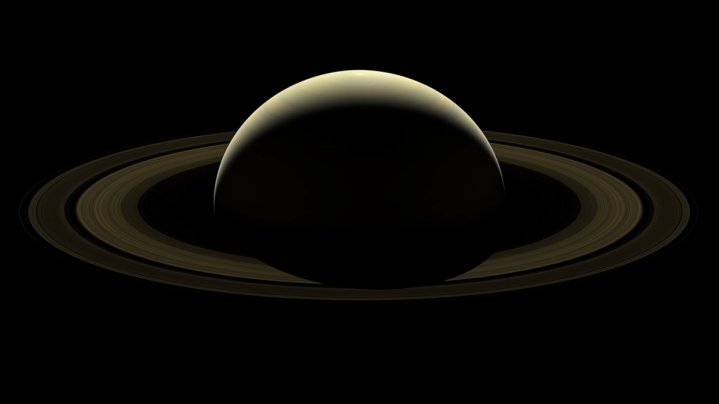
Cassini spacecraft has finally bid goodbye to its home planet after staying at Saturn for 13 long years. While plunging into the planet, the spacecraft had snapped a series of splendid images, which are available now.
As reported by NASA, Cassini's wide-angle camera clicked 42 red, green and blue images of Saturn in the last leg of its journey. The last bunch of images, which were taken by Cassini on September 13, 2017, covered the planet and its main rings from one end to the other. The image experts from the space agency stitched the frames together and gave them a natural color view. The scene also includes Saturn's moons Prometheus, Pandora, Janus, Epimetheus, Mimas and Enceladus.
Cassini's 13 years long exploration of Saturn and its neighborhood helped the scientists understand the planet in a more deep and comprehensive way.
"Cassini's scientific bounty has been truly spectacular -- a vast array of new results leading to new insights and surprises, from the tiniest of ring particles to the opening of new landscapes on Titan and Enceladus, to the deep interior of Saturn itself," said Robert West, Cassini's deputy imaging team leader at NASA's Jet Propulsion Laboratory in Pasadena, California.
While the Cassini imaging team had been planning a special farewell view of Saturn for years, it was still difficult for them to say goodbye for the final time.
"It was all too easy to get used to receiving new images from the Saturn system on a daily basis, seeing new sights, watching things change. It was hard to say goodbye, but how lucky we were to be able to see it all through Cassini's eyes," said Elizabeth Turtle, an imaging team associate at the Johns Hopkins University Applied Physics Laboratory, Laurel, Maryland.
The Cassini spacecraft, which was launched way back in 1997, orbited Saturn for the last 13 years starting from 2004. The mission discovered numerous spectacular breakthroughs, including the astonishing geologic activity on Saturn's moon Enceladus and the liquid methane oceans on Saturn's largest moon, Titan.
Cassini ended its journey by taking a striking jump into the planet's atmosphere on September 15, 2017 and kept sending the unique science data until it lost all contacts with Earth.
Also Read: NASA's most powerful moon rocket Saturn V completes 50-years of its maiden voyage
"For 37 years, Voyager 1's last view of Saturn has been, for me, one of the most evocative images ever taken in the exploration of the solar system," said Carolyn Porco, former Voyager imaging team member and Cassini's imaging team leader at the Space Science Institute in Boulder, Colorado. "In a similar vein, this 'Farewell to Saturn' will, forever, serve as a reminder of the dramatic conclusion to that wondrous time humankind spent in intimate study of our Sun's most iconic planetary system."









